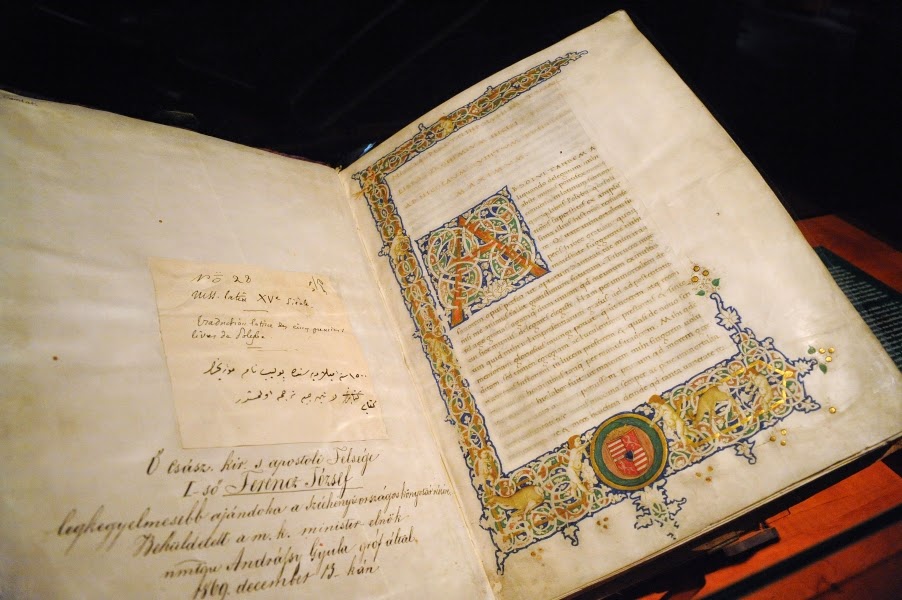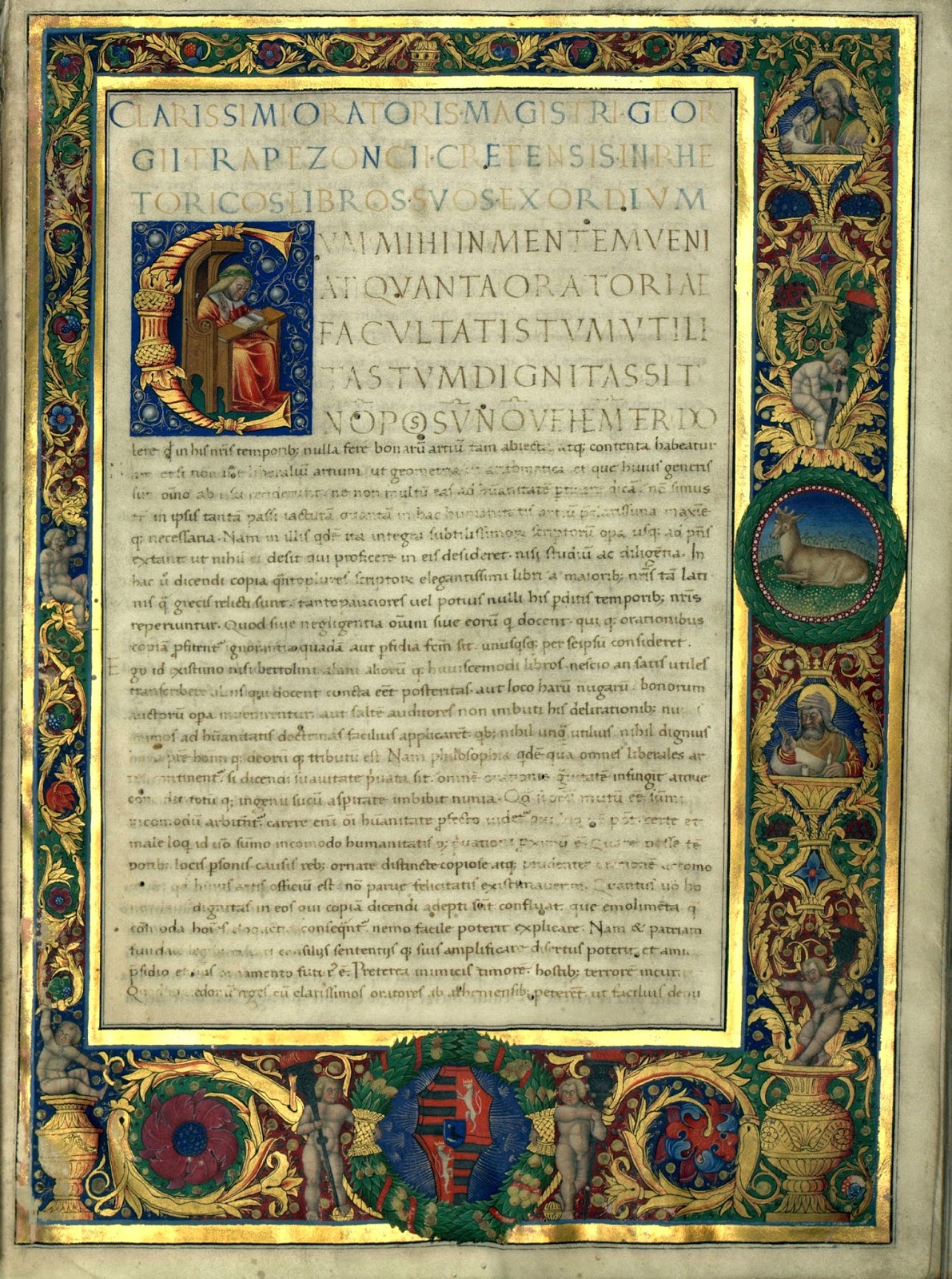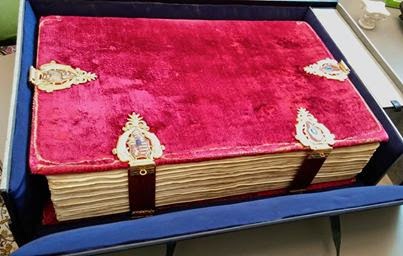Medieval History
- Unfinished Florentine Bible Of King Matthias Digitized
Firenze, BML, Plut. 15.15Once more I would like to report about the digitization of some very important volumes originally destined for the famed library of King Matthias Corvinus, the Bibliotheca Corviniana. This time I discovered that the Biblioteca...
- Corvinian Manuscripts Digitised
The very exciting digitisation process at the Vatican Library is going ahead at full speed, and the Library has made available online two manuscripts from the famous Bibliotheca Corviniana, the library of King Matthias Corvinus (1458-1490). The manuscripts...
- Poland To Digitise Medieval Manuscripts
Wroclaw, University Library, R 492 As Medievalist.net reported, Wroclaw University Library in Poland is teaming up with IBM to digitize nearly 800,000 pages of European manuscripts, books, and maps dating back to the Middle Ages. This will include...
- Medieval Manuscripts At The National Library
A page from the 14th century Bible of 'Weceslaus dictus Ganoys' National Széchényi Library The National Széchényi Library preserves Hungary's largest repository of medieval manuscripts, and it is also an important research center...
- Corvinian Manuscripts At The Laurenziana
Couple of weeks ago I wrote about new research on the Bibliotheca Corviniana, and mentioned a few digitized manuscripts not listed on the Bibliotheca Corviniana Digitalis website. Now I would like to call attention to another wonderful resource, the digitized...
Medieval History
Corvinian manuscripts on view in Budapest
 |
| The Polybios-Corvina at the exhibition. Photo: National Széchényi Library |
Four precious manuscripts from the famed library of King Matthias Corvinus, the Bibliotheca Corviniana are on view for a short time at the National Széchényi Library in Budapest. The four manuscripts are the ones which were returned to Hungary by Sultan Abdülaziz in 1869, so the exhibition is titled: The Sultan's Gift. Four Corvinian Manuscripts from the Serai.
The exhibition takes us back not only to the period when King Matthias (1458-1490) established the first major Humanistic library of Europe outside Italy, but also to the 19th century, when Hungarian aristocrats and scholars carried out a long-term struggle to reclaim at least a few volumes from the library of Matthias Corvinus. Works in the library numbered 2500 at the death of the king, while several manuscripts were still unfinished for him in Florence (these entered the library of the Medicis). Soon after his death, this library began to lose volumes - first western Humanists started taking volumes, as gifts from King Wladislas II (who was less interested in books). Then during the period when Hungary started battling the Ottoman Empire, and was beset by internal strife (between the Battle of Mohács in 1526, and the capture of Buda in 1541), this process accelerated. A lot of the volumes were then taken to Istanbul when the castle of Buda fell to the Turks. As a result of this long process, by the early 19th century, not a single Corvinian manuscript was known within Hungary. The first manuscript to return to Hungary (more specifically, to Transylvania), was a Tacitus volume acquired by Sámuel Teleki for his library at Marosvásárhely in 1805 (the manuscript today is at the Beinecke Library of Yale University). Several attempts after this were unsuccesful to acquire a Corvina manuscript for the nation's capital, Buda. Although the Dialogues of Ludovicus Carbo, a rather modest early Corvinian manuscript, was donated to the Hungarian Academy of Sciences in 1840, this failed to create significant interest (but now it is available in a digital facsimile edition, with commentary). Finally, attention was focused to Istanbul, in hopes that some of the manuscripts can be identified there. In 1862, Ferenc Kubinyi, Arnold Ipolyi and Imre Henszlmann finally identifed some manuscripts in Istanbul, at the library of the imperial palace. Then in 1869, on occasion of the opening of the Suez canal, the sultan gave four volumes to Emperor and King Franz Joseph I. The ruler then duly gave the manuscripts the National Museum (from which they entered the National Library along with other manuscript material). The in 1877, Sultan Abdul Hamid II decided to donate a further 35 manuscripts to Budapest, which entered the University Library (it soon turned out that only about 13 of these manuscripts originate from the library of King Matthias - for more information, read the study of Csaba Csapodi on the history of the library).
 |
| The title page of the Trapezuntius-Corvina. National Széchényi Library |
The present exhibition features the four manuscripts returned to Hungary in 1869. The manuscripts are the following (with link to digital facsimiles):
Cod. Lat. 234: The Historiae of Plolybius, a Florentine codex dating between 1450-1470
Cod. Lat. 241: Plautus: Comediae, a Florentine codex from before 1459
Cod. Lat. 121: A Neapolitan manuscript of Augustinus' De civitate Dei
Cod. Lat. 281: The Rhetorica of Trapezuntius, a Latin translation of the work in a manuscript made in Buda in the 1480s.
 |
| The binding of the Augustinus-Corvina, photo taken during installation. Source: National Library Facebook-page |
The exhibition was organized in connection with the Budapest Book Festival, the guest of honor of which is Turkey. Becauses of this, a few Turkish manuscripts are also on view, as well as the early 16th century genealogical roll of Turkish emperors (Genealogia Turcorum imperatorum) by Felix Petancius. The books are only on view until May 6th. The curator of the exhibition is Edina Zsupán - she is also featured in a well-documented article about the installation process (in Hungarian).
To receive more information on the Corvinian manuscripts, please take a look at these pages of my website and blog: New research on the Corvinian Library (with links to full-text publications), and my page on digitized Hungarian manuscripts, with direct links to over 100 Corvinian manuscripts. You can also get a lot of more photos on the Facebook page of the library.
- Unfinished Florentine Bible Of King Matthias Digitized
Firenze, BML, Plut. 15.15Once more I would like to report about the digitization of some very important volumes originally destined for the famed library of King Matthias Corvinus, the Bibliotheca Corviniana. This time I discovered that the Biblioteca...
- Corvinian Manuscripts Digitised
The very exciting digitisation process at the Vatican Library is going ahead at full speed, and the Library has made available online two manuscripts from the famous Bibliotheca Corviniana, the library of King Matthias Corvinus (1458-1490). The manuscripts...
- Poland To Digitise Medieval Manuscripts
Wroclaw, University Library, R 492 As Medievalist.net reported, Wroclaw University Library in Poland is teaming up with IBM to digitize nearly 800,000 pages of European manuscripts, books, and maps dating back to the Middle Ages. This will include...
- Medieval Manuscripts At The National Library
A page from the 14th century Bible of 'Weceslaus dictus Ganoys' National Széchényi Library The National Széchényi Library preserves Hungary's largest repository of medieval manuscripts, and it is also an important research center...
- Corvinian Manuscripts At The Laurenziana
Couple of weeks ago I wrote about new research on the Bibliotheca Corviniana, and mentioned a few digitized manuscripts not listed on the Bibliotheca Corviniana Digitalis website. Now I would like to call attention to another wonderful resource, the digitized...
